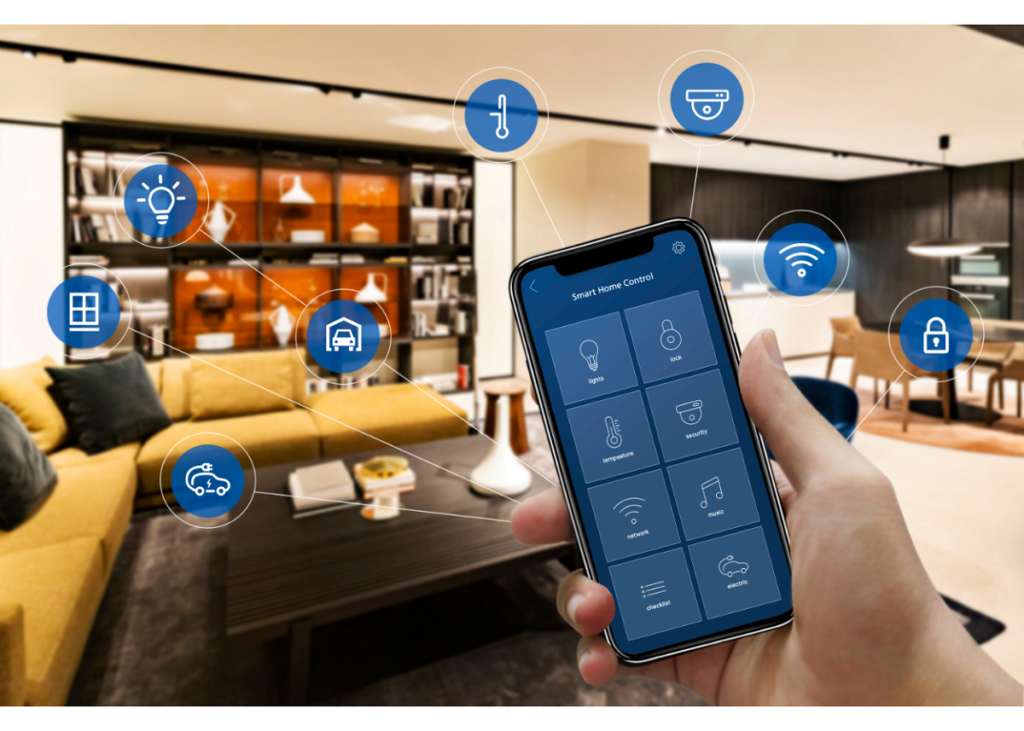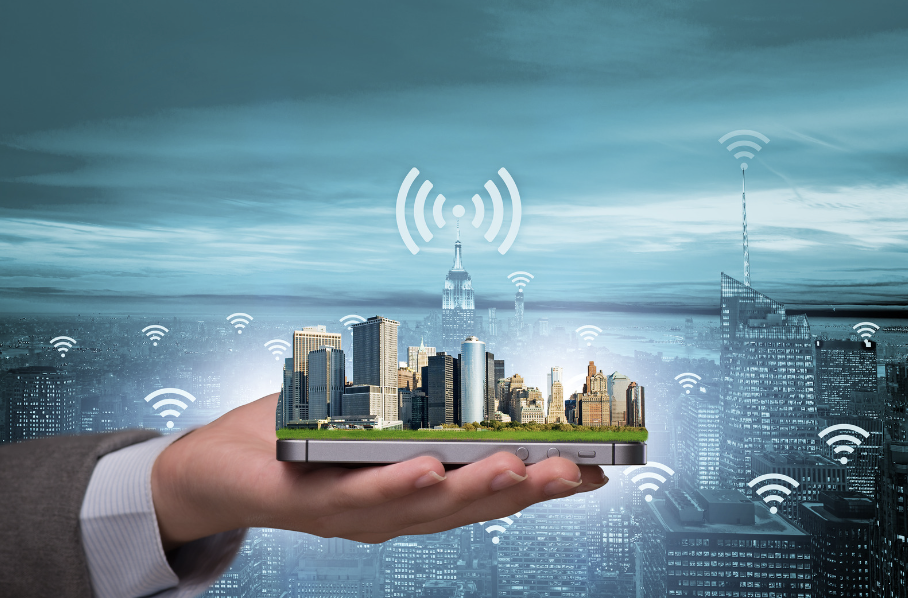- What is digital infrastructure and why should it be a primary focus?
- What are the risks of not having the right digital infrastructure?
- What kinds of solutions can the right digital infrastructure enable?
- Common amenities and basic operations
- Smart solutions and the Internet of Things
- Going beyond the basics
- Conclusion
- Here are some helpful links to learn more
What is digital infrastructure and why should it be a primary focus?
Digital infrastructure is the foundation for connected operations, offering the means for the continuous transfer of large amounts of data to support solutions that use that data. It’s the backbone of the technology ecosystem, playing a vital role in almost every part of a property’s operations.
Several types of digital infrastructure are commonly used in hospitality and residential properties:
- Fiber offers many benefits over other options:
- High bandwidth, fast speeds, low latency, and less “lossy” over distanceLonger service life (typically 20+ years)Easier to scaleSafer due to its inability to generate sparksLess subject to interference from electrical noise in the surrounding environmentMore secure data transmission
- More environmentally friendly
- Copper cabling such as CAT6/6A Ethernet is another option, with pros and cons:
- Less expensive than fiber in terms of material costs, but needs more frequent replacement
- Lower capacity than fiber, but faster than other cabling or wireless options
- Multiplexer technology can be used to deliver gigabit bandwidth over an existing coaxial cabling infrastructure, usually for specific applications such as in-room entertainment.
- Wireless backhaul solutions are useful for situations where wired solutions would be impractical or impossible (such as linking one wing of a building to another across a well-used public space like a lobby), but they also have some drawbacks:
- Less disruptive to install
- Require more maintenance and either line-of-sight or near-line-of-sight positioning
- Subject to many types of interference from the surrounding environment
- Usually less available bandwidth
- Transmissions tend to be slower
Some technologies that can be used for wireless backhaul include:
- WiFi, especially gigabit WiFi, uses high-speed, high-capacity access points to transmit larger amounts of data; these APs may even include technology to improve non-line-of-sight transmission to cover broader areas.
- Citizens Band Radio Service (CBRS) uses spectrum recently approved for commercial use. CBRS offers 5G speeds and lower latency than WiFi and can handle a large amount of traffic that will not be disrupted by local WiFi or cellular networks.
In recent years, we’ve seen exciting developments in technology for hospitality and residential properties: updated standards that support better WiFi, a wider variety of in-room entertainment options, and solutions for greater automation and personalization. These technologies all require robust connectivity that can support large amounts of data. But even as these connected applications shift from options to necessities, affecting whether people choose your property and how much they’re willing to spend, many properties may not have the needed digital infrastructure to support them.
What are the risks of not having the right digital infrastructure?
There are several risks in not upgrading your digital infrastructure:
- You’re likely to get complaints from guests and residents, potentially resulting in lower reviews and the loss of business to other properties. Also, guests are seeking a home-like experience, and both hotel guests and MDU residents place a premium on smart capabilities; if you can’t offer these things, you’ll lose business to others who can.
- It is more expensive to keep older infrastructure running and to keep your existing systems running without the insight and control that comes with having a modern digital infrastructure.
- Older solutions may not require connectivity, but their downsides include a lack of support and potential shortages of replacement equipment.
- Older non-connected systems are more difficult to manage. For example, staff can’t just apply updates and settings across all locations from the cloud if they’re not using connected solutions.
- There are security risks/vulnerabilities in older infrastructure and solutions that don’t have modern security features built in. There is also the potential for failure of systems that don’t have cloud backup, such as phone systems with local PBX or CCTV with only on-site recordings.
- It’s getting harder to recruit and maintain good staff, and surveys indicate that upgrading technology is now a key strategy for staff recruitment and retention in the hospitality industry.
What kinds of solutions can the right digital infrastructure enable?
Digital infrastructure supports solutions that can provide a better experience, improve efficiency, and offer cost savings. Below are some examples of how this might look in practice.

Common amenities and basic operations
Items such as phones, TVs, and your front desk might seem basic, but how well they work can make the difference between a pleasing experience that’s easy to manage and a difficult experience that offers more pain than enjoyment. The right digital infrastructure can help:
- Fast, accessible, reliable WiFi throughout the property (indoors and outdoors) is noted as a must-have for hotel guests and MDU residents.
- With modern VoIP phone systems, either premise-based or cloud-based, it’s crucial to have a reliable way to transmit data, not only for performance but also for management and updates.
- Common area CCTV cameras use digital infrastructure for real-time monitoring and to transmit data from cameras to storage in the back office or the cloud.
- Both front office and back office functions rely on digital infrastructure, including everything from touch-free check-in options to your PMS.
- Restaurants and event spaces require digital infrastructure to support things like your POS system, business presentations, and conference offerings.
- Entertainment options need a robust digital infrastructure that can handle large streams of data, especially for newer options. Most hotel guests now say they’d like to be able to cast content from their own devices, and over 1/3 say that would influence their choice of hotel.

Smart solutions and the Internet of Things
The Internet of Things (IoT) is an environment of connected objects such as sensors and controls that are often incorporated into smart solutions. This kind of technology ecosystem can result in better service and improved operations at lower cost and offers the smart, contactless, personalized functionality that guests and residents are coming to expect.
Smart solutions enabled by a robust digital infrastructure include:
- Operational monitoring and automation using smart thermostats, smart lighting, and other items with occupancy sensors and/or check-in/check-out data can improve energy management by adjusting settings based on whether a room is occupied.
- Workforce automation technology can improve the efficiency of your staff, improve workflow, and reduce burnout.
- Similarly, in smart event spaces hosts can easily adjust door access settings, temperature, lighting, and more based on the needs of an event.
- Mobile keys offer touchless functionality, allow for remote configuration and management, reduce operating costs, and improve the security of your entire property.
- Personalization of settings for climate control, lighting, audio, and more can make guests and residents feel more at home, and they’re increasingly asking for these features.
- Maintenance and logistics solutions offer preventive maintenance to detect issues before guests or residents complain and to respond more quickly to their needs. For example, smart solutions are available that monitor for problems such as air quality issues and water leaks.
- For greater efficiency of operations, you can use smart solutions with asset tracking sensors to alert your staff when shelves need to be restocked, RFID & GPS tags to track and locate equipment such as food trays and luggage carts, and usage tracking to determine when to restock inventory.
Going beyond the basics
A properly planned and implemented digital infrastructure will be ready to support technologies that are only now being envisioned and developed, as well as some that are just starting to be used at higher-end properties, such as:
- Guests and residents are seeking a touchless approach. Voice-controlled devices allow guests and residents to order room service, schedule appointments, access concierge services, adjust lighting, temperature, curtains, and door locks, control TV and entertainment options, and more.
- Some properties are now using robots and virtual assistants to alleviate staff shortages and provide touchless service while maintaining high service scores.
- Modern properties are also implementing technologies such as AR/VR and facial recognition to add to the “wow!” factor by providing new ways of interacting with the property.
Conclusion
As connected solutions are increasingly adopted by hotels and MDUs, the need for fast, reliable, high-bandwidth data transmission is always growing. Without a modern digital infrastructure, properties can add all the services in the world, but they won’t be fully functional. The right digital infrastructure can tie everything together, making solutions easier & less expensive to operate & manage, as well as improving the guest/resident experience, making operations more efficient, and saving money.

